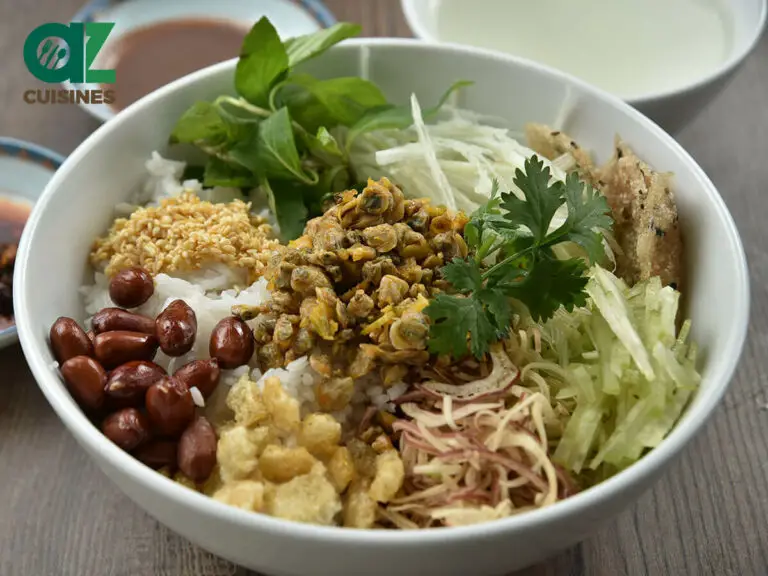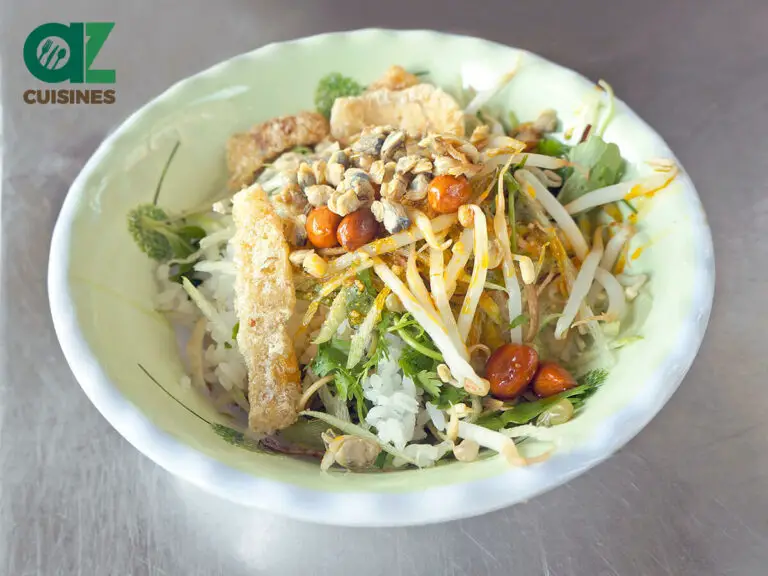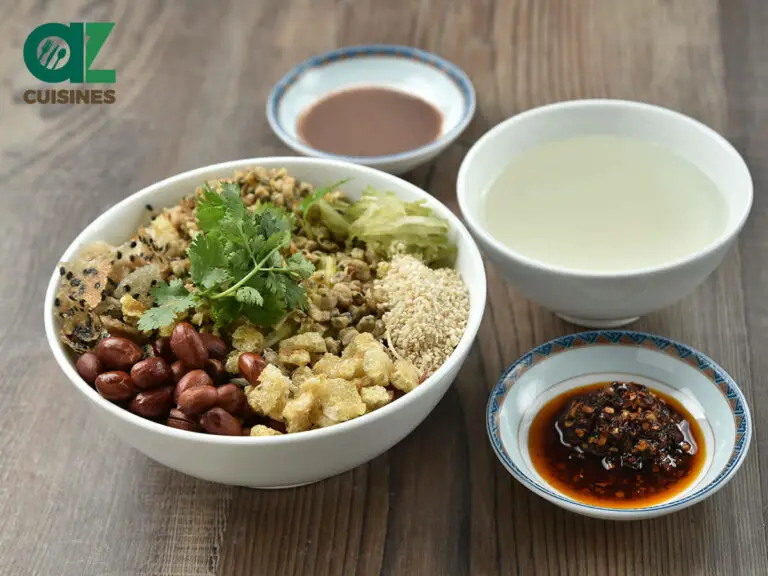#124 in Vietnam
Cơm Hến: Basic Information
Pronunciation
Alternative Name(s)
Dish Type
Course
Mealtime
Popular Variations
Cơm Hến: Ingredients and Preparation
Main Ingredients
Main Cooking Method
Preparation Process
Cơm Hến: A Deep Dive
Cultural Significance
Taste
Texture
Aroma
Color
Serving Style
Serving Temperature
Accompaniment
Occasions
Seasons
Special Diets
Calories
Popularity
Popular Similar Dishes
Popular Dining Area
Cơm hến is a combination of rice with baby clam to create a Vietnamese signature dish originating from Hue. Aside from rice and clams, cơm hến comes with peanuts, pork rinds, shrimp paste, starfruits, and giant elephant ear stems.
Furthermore, this traditional rice specialty comes with a light broth made from boiled clam water seasoned with a few simple spices. Interestingly, cơm hến was thought to have been created around 200 years ago when a woman could only catch river clams for having with rice.
In Hue, the dish is a must-have street food dish for tourists and anyone visiting the region. Also, the mild flavor of clam meat makes it ideal for accompanying various elements of cơm hến.
Discover more about cơm hến, especially about its benefits and drawbacks when consumed. Also, make sure to look into some of the common concerns relating to cơm hến along with dishes that are similar to it.
Key Points
Cơm Hến Images
Pros and Cons of Eating Cơm Hến
To enjoy cơm hến worry-free, here are the features for you to consider closely when having this mussel and rice dish for your next meal:
Pros
Cons
Additionally, you should have a look at other inquiries about cơm hến to ensure a thorough understanding of this classic Hue dish.












Truc Tran (Kris)
Senior Food Editor
Expertise
Home Cooking, Meal Planning, Recipe Development, Baking and Pastry, Food Editor, Cooking-video Maker, Vietnamese Food Evaluation Expert
Education
Truc Tran (Kris), an experienced food writer and editor, is great at exploring and describing global cuisines, from simple street food to fancy dining. In her writing, she skillfully mixes different flavors, cooking methods, and culinary traditions, showing the unique character of various cultures through their food and drinks. On azcuisines.com, Kris highlights her knowledge, especially in Asian cuisine and worldwide traditional dishes.